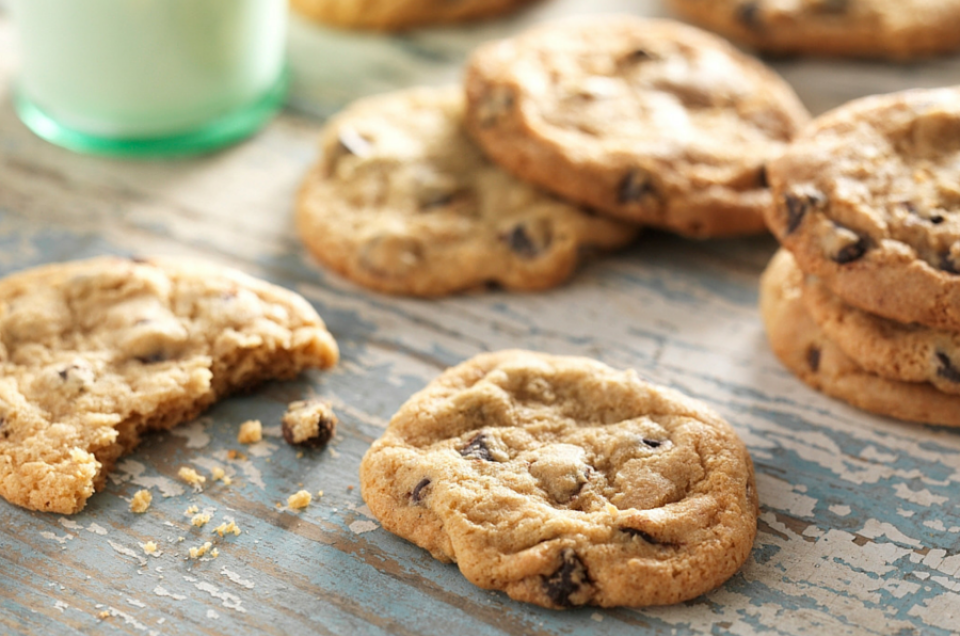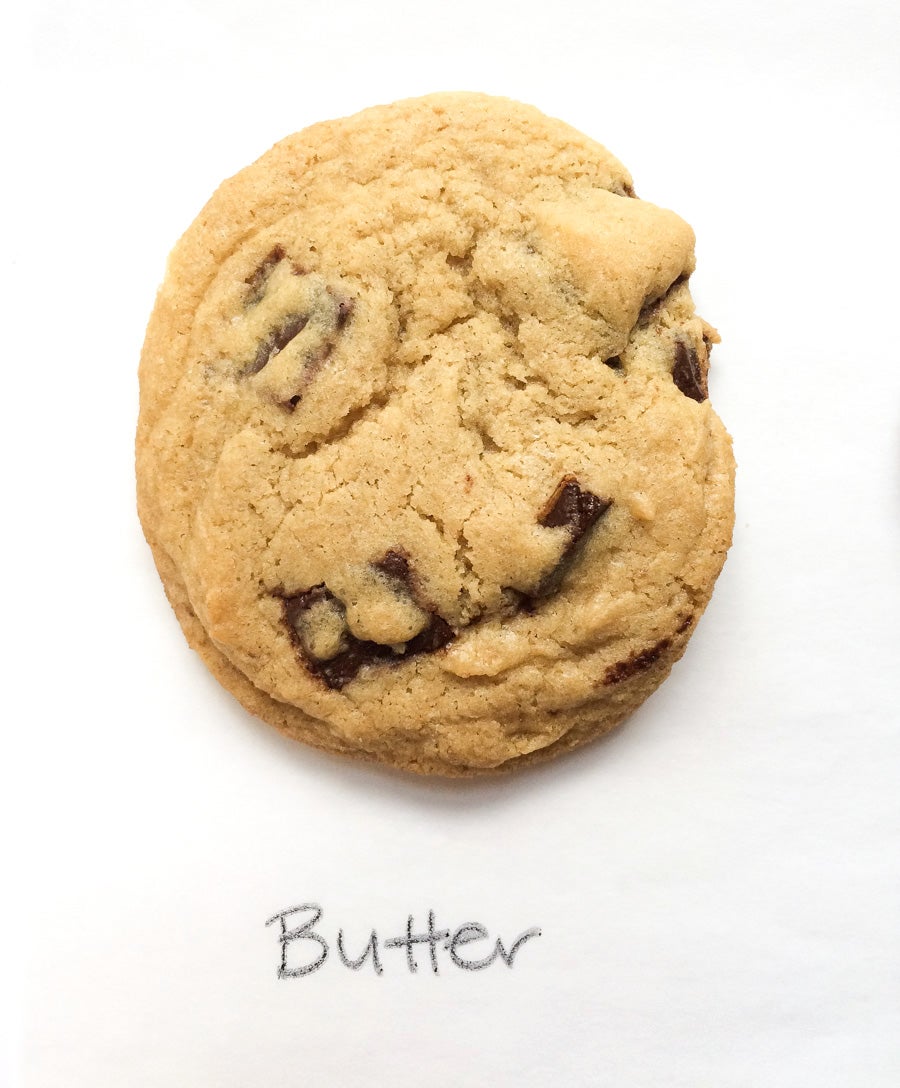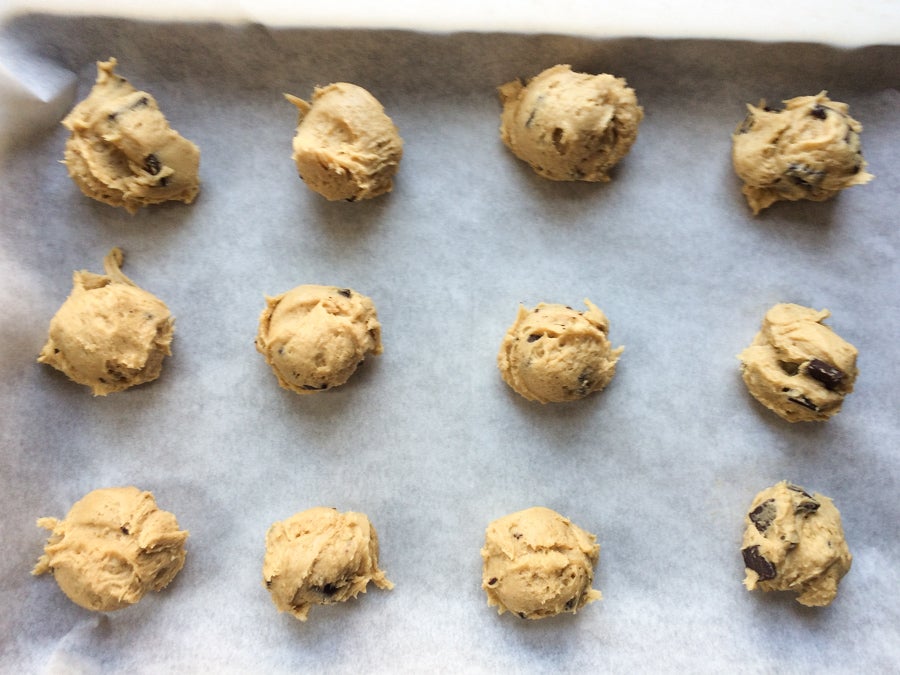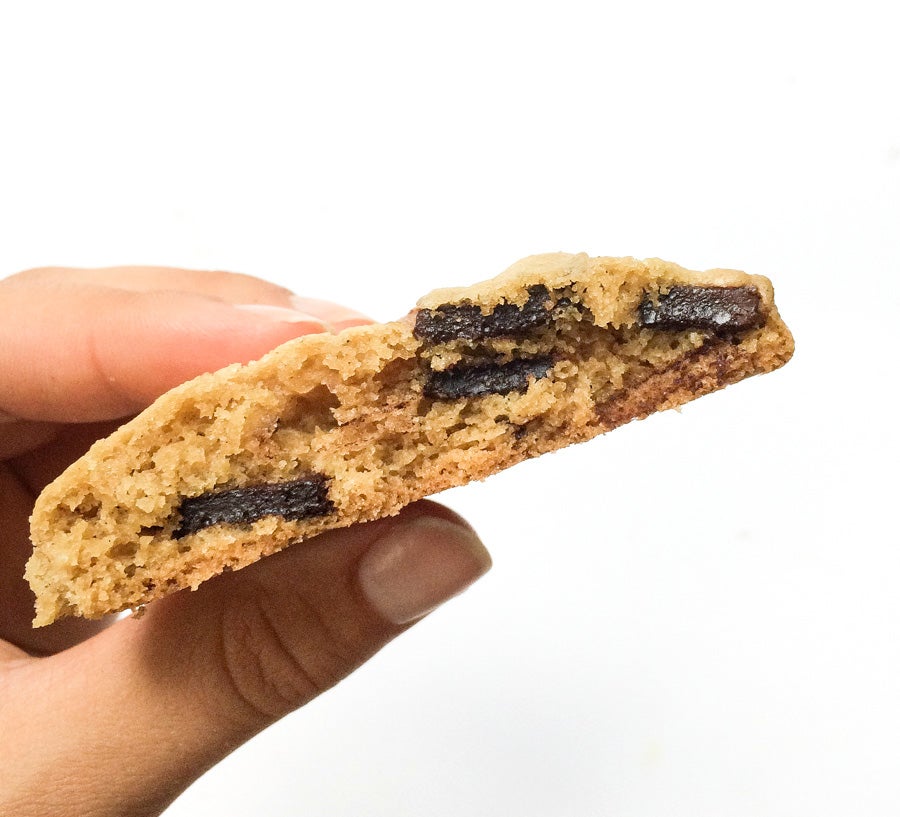


One of the most common questions we get from our gluten-free readers and bakers is how to make fat substitutes in gluten-free baking. Most of our recipes use either butter or vegetable oil as the primary fat, simply because they're the most accessible for the majority of our audience. But we also want you to know that we hear your questions about using alternatives.
Most people are unsure when you can substitute different fats 1:1 for one another: what the difference would be if you used butter vs. shortening vs. oil, for example. So we decided to put one of our tried-and-true gluten-free recipes to the test: Gluten-Free Chocolate Chip Cookies.
We decided to do a cookie test for a few reasons. First, cookies generally use just one fat and don’t require any fancy techniques. Second, our Gluten-Free Chocolate Chip Cookies recipe uses butter, and many of our readers are looking for a dairy-free alternative.
Finally, that recipe is one of the most beloved on our site, with nearly 100 reviews and a 4.5 star rating. So we wanted to test versions of this cookie using alternate fats in order to enable even more people to enjoy them.
We had a hard time choosing which fat substitutes to try in this test, but what it boiled down to was the oils/fats that we get the most questions about from our readers baking gluten-free. Here’s what we decided on:
To make this test as fair and straightforward as possible, we kept the recipe exactly the same throughout, simply changing the type of fat. We followed the existing recipe, using our gluten-free flour, but didn't include any nuts. The baking temperature was 350ºF.
Curious to see what happened? Here are the results.
As expected, and as you can see from the picture above, the fats that we used certainly had an effect on the final recipe. We’ll talk about each of the specific fat substitutes in a moment, but we just wanted to demonstrate how much the type of fat you use in a recipe can affect the final product. These three cookies varied in everything from texture to bake time to flavor.

Out of all the versions, this was the cookie that we kept coming back to. It had the right texture, the right flavor, and was baked to perfection, with lightly browned edges and soft, gooey centers. The cookies were a wonderful blend of chewy and crunchy, and carried just the right amount of sweetness.
Since the butter was at room temperature we were able to easily beat it with the sugar, which helped make the cookies nice and light.

Dough: The dough was sticky, but was easily shaped with a cookie scoop. The cookies also kept their shape on the baking sheet.
Texture: Chewy, soft, and lightly crisp around the edges.
Bake time: 11 minutes.
Our next favorite result came with vegan butter. The flavor of the cookies most resembled the original recipe, though we did notice they tasted a bit sweeter. While vegan butter doesn’t list any sugar/sweetener in its nutritional panel, we think it simply pulls out a slightly different flavor from the sugars.
Since vegan butter was also soft at room temperature, we were able to easily beat the fat and sugar together. Again, this helped keep the cookies light.
Dough: The dough in this version was a little softer than the original. When scooped onto the baking sheet, the cookies didn't hold their shape as well, starting to spread as soon as they were scooped.

Texture: These were a bit cakier and less chewy than the butter-based recipe. The edges were crisp and golden brown, while the centers remained chewy and soft.
Bake time: 12 minutes.
The coconut oil chocolate chip cookies showed a marked difference from the original recipe, and were our least favorite. Since we used all coconut oil in the recipe, there was an underlying coconut flavor to the cookies.
Since coconut oil is rock hard when chilled, it's impossible to cream it with sugar like you do with butter. And because we tested our other fats at room temperature, we also wanted to test the coconut oil at room temperature, which meant that the oil was completely liquefied. Thus when we beat the fat and sugar together the dough didn't lighten in texture like it did in our cookies made with a solid fat. This certainly added to the coconut oil cookies' denser texture.
Dough: The dough was much smoother than the original. It had a slight shine to it, and felt a little more oily. It did hold its texture when placed on the cookie sheet; and when baked, the cookies didn't spread as much as the butter or vegan butter cookies.
Texture: The texture was also very different from the butter-based cookies. Coconut oil cookies were much cakier; and instead of spreading fairly flat, they had a large dome. The edges also weren't quite as crispy and they didn't brown as much as the butter (and vegan) butter ones. Additionally, they were very tender and soft, but crumbled a bit more than the other cookies when completely cool.
Bake time: 14 minutes.
While it's certainly possible to use different fats in gluten-free baking, understand that the end result won’t necessarily be the same.
It's important to note that we tested these fats in a recipe that doesn’t require the fat to be chilled (such as pie crust); coconut oil would be even trickier to use in a recipe requiring solid/chilled/hard fat.
Our suggestion: if you’re looking for a dairy-free fat substitute in your gluten-free baking, choose a fat that most resembles the one used in the original recipe. For example, a recipe that calls for butter would be best made with a vegan butter substitute. For a recipe made with vegetable oil, you could use coconut oil in its place. In order to keep the recipes as much the same as possible, match your fat substitutions as best you can.
Finally, we recommend that you watch your baking times. We always provide time ranges for our recipes; when you’re using a fat substitute, start with the shorter time, and check every 1 to 2 minutes, until done.
What's your favorite fat substitute? Do you have any tips you can share with our readers? Please leave a comment and let us know!